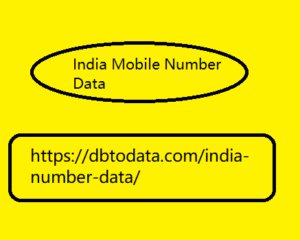Post by account_disabled on Mar 10, 2024 10:48:02 GMT
Iclearly remember the emotion of the evenings in the company of the radio waiting for the latest news from overseas, chosen by a host/DJ with a broader musical culture than mine. Once upon a time the discovery of new music necessarily passed through frequency modulation waves, today it arrives via the internet, filtered by an algorithm. And, nostalgia aside, I don't mind it, on the contrary, I find it very effective and efficient. A method suitable for the sound overproduction that characterizes our time. Spotify, the platform used for audio streaming by over 320 million people, differs from its competitors precisely due to the extensive use of recommendation algorithms (but there are also playlists decided by an editorial team of experts).
The entire Artificial Intelligence system, indicated in some India Mobile Number Data documents with the nickname BaRT (Bandits for Recommendations as Treatments), has the task of making us use the platform for as long as possible. To do this, it must be able to identify exactly what we want to listen to, at any time of the day, among the 60 million songs and 2 million podcasts available. The choices of the algorithm The work of BaRT (fruit of the startup Echo Nest, acquired in 2014) materializes in the creation of the Spotify homepage, which changes over time and depending on the user. At each opening it shows different boxes/playlists created specifically for the user and ordered to stimulate our curiosity. In particular, the algorithmic playlists are: DailyMix : a maximum of 6 mixes based on the user's favorite genres. Includes songs already listened to and some suggestions.

They are updated frequently, if you listen to a lot of music; Release Radar : An algorithmically crafted playlist every Friday featuring newly released music; Discover Weekly : a selection of mostly old songs, but in line with the user's tastes. It comes out every Monday; On Repeat and Repeat Rewind : a list of songs that the user listens to most frequently, updated every five days; Daily Podcast : a selection of episodes that those who love this genre might like. Furthermore, the algorithm also has a hand when, at the end of a song or album chosen by the user, a song starts automatically (autoplay). But what are the techniques used by Spotify's mathematical DJ? Music analysis techniques Before any recommendation activity, the system learns to "understand" and catalog the sounds and music acquired in the catalogue, day after day.
The entire Artificial Intelligence system, indicated in some India Mobile Number Data documents with the nickname BaRT (Bandits for Recommendations as Treatments), has the task of making us use the platform for as long as possible. To do this, it must be able to identify exactly what we want to listen to, at any time of the day, among the 60 million songs and 2 million podcasts available. The choices of the algorithm The work of BaRT (fruit of the startup Echo Nest, acquired in 2014) materializes in the creation of the Spotify homepage, which changes over time and depending on the user. At each opening it shows different boxes/playlists created specifically for the user and ordered to stimulate our curiosity. In particular, the algorithmic playlists are: DailyMix : a maximum of 6 mixes based on the user's favorite genres. Includes songs already listened to and some suggestions.

They are updated frequently, if you listen to a lot of music; Release Radar : An algorithmically crafted playlist every Friday featuring newly released music; Discover Weekly : a selection of mostly old songs, but in line with the user's tastes. It comes out every Monday; On Repeat and Repeat Rewind : a list of songs that the user listens to most frequently, updated every five days; Daily Podcast : a selection of episodes that those who love this genre might like. Furthermore, the algorithm also has a hand when, at the end of a song or album chosen by the user, a song starts automatically (autoplay). But what are the techniques used by Spotify's mathematical DJ? Music analysis techniques Before any recommendation activity, the system learns to "understand" and catalog the sounds and music acquired in the catalogue, day after day.
